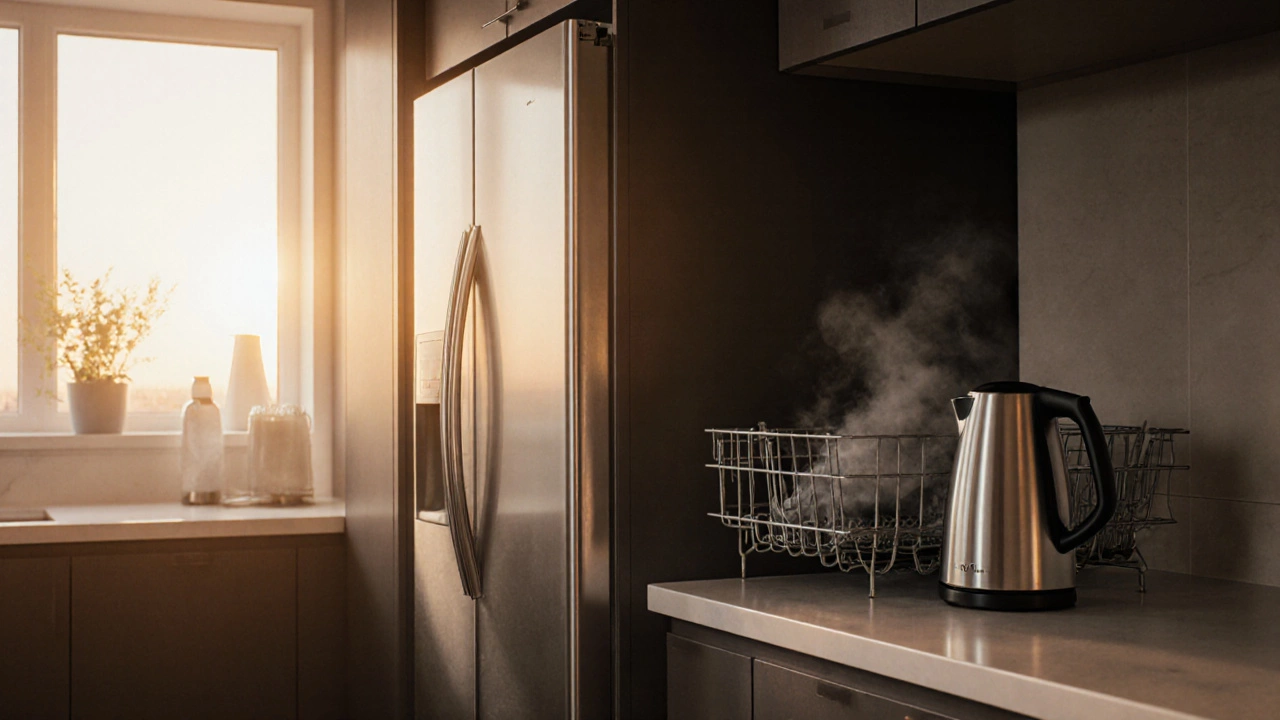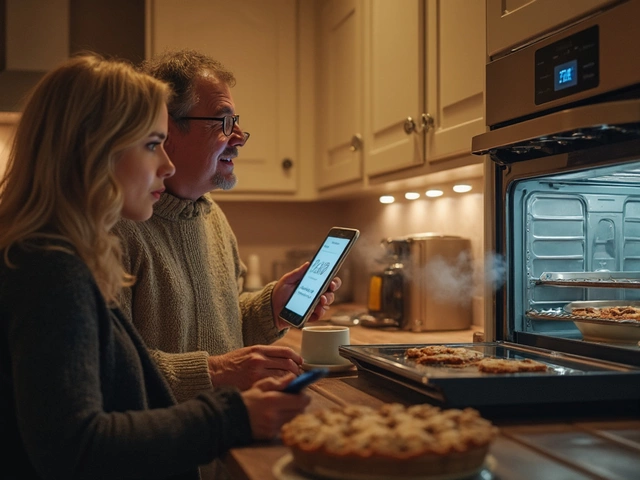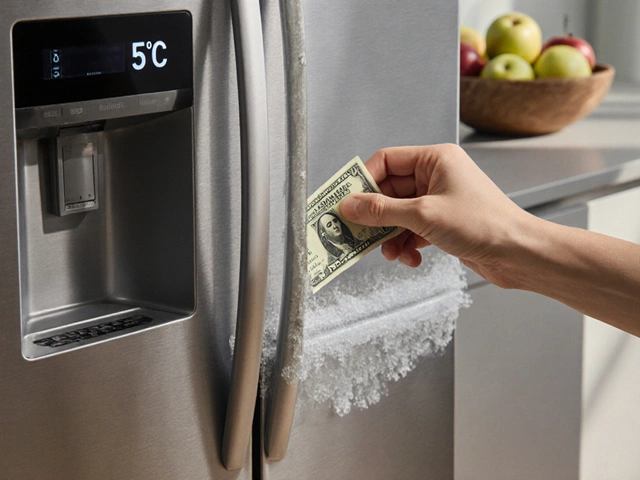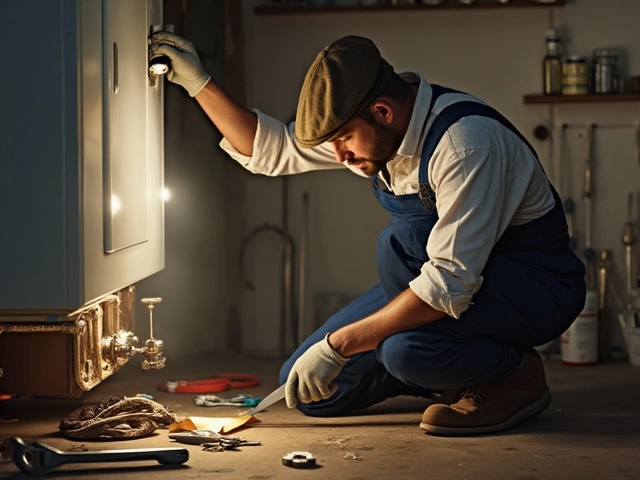Appliance Repair vs Replacement Calculator
Make an Informed Decision
Determine whether repairing or replacing your appliance makes the most financial sense based on age and cost factors.
Enter your appliance details to get a recommendation.
Think about your kitchen. The fridge humming in the corner. The oven warming up for dinner. The dishwasher rattling through its cycle. These aren’t just objects-they’re appliances. And if you’ve ever had one break down, you know how much they shape your daily life. But what exactly counts as an appliance? It’s not as simple as it sounds.
What Makes Something an Appliance?
An appliance is a device designed to perform a specific household task, usually powered by electricity or gas. It’s built to make life easier-less manual work, less time spent on chores. You don’t use it for entertainment or communication. You use it to cook, clean, cool, or heat.
The key difference between an appliance and a regular electronic gadget? Appliances are built for durability and function, not screens or connectivity. A toaster doesn’t need Wi-Fi. A washing machine doesn’t need an app. They just need to work, reliably, day after day.
Most appliances fall into two big groups: major and small. Major appliances are the big ones you can’t easily move. Small appliances are the ones you grab off the counter.
Major Appliances: The Backbone of Your Home
These are the big players. They’re often built into your kitchen or laundry room. If one breaks, you’re not just inconvenienced-you’re stuck. Here are the most common ones:
- Refrigerators - Keep food cold, slow spoilage, and often come with ice makers and water dispensers. Modern ones use inverter compressors to save energy.
- Freezers - Separate units or built into fridges. Used for long-term food storage. Frost-free models prevent ice buildup automatically.
- Ovens and Cookers - Electric or gas-powered. Ovens bake and roast. Cookers include hobs (stovetops) and ovens in one unit.
- Dishwashers - Clean dishes with hot water and detergent. Modern models use sensors to adjust water use based on load dirtiness.
- Washing Machines - Clean clothes with water, spin cycles, and different settings for fabrics. Front-loaders use less water than top-loaders.
- Tumble Dryers - Remove moisture from clothes after washing. Condenser and heat pump models are more energy-efficient than vented ones.
- Water Heaters - Provide hot water for showers, sinks, and appliances. Tankless models heat water on demand, saving space and energy.
- Extractors and Range Hoods - Pull smoke, steam, and smells out of the kitchen during cooking. Often mounted above stoves.
These aren’t just convenient-they’re essential. In Australia, where temperatures can swing from freezing nights to 40°C days, a working fridge and air conditioner aren’t luxuries. They’re health necessities.
Small Appliances: The Daily Helpers
These are the ones you use every morning. You pick them up, use them, and put them away. They’re smaller, cheaper, and often replaced more often.
- Electric Kettles - Boil water in under 3 minutes. Most have automatic shut-off for safety.
- Toasters - Brown bread, bagels, or pastries. Dual-slice models are standard in most homes.
- Microwaves - Reheat food quickly. Newer models include convection settings for baking and crisping.
- Blenders and Food Processors - Chop, puree, mix. Used for smoothies, sauces, or baby food.
- Coffee Makers - Drip, pod, or espresso. Australians drink an average of 2.3 cups a day-coffee machines are practically mandatory.
- Vacuum Cleaners - Upright, stick, or robotic. They remove dust and debris from carpets and floors.
- Irons and Steamers - Remove wrinkles from clothes. Steam irons are faster and gentler on fabrics.
Small appliances are where most people start when they’re fixing things themselves. A broken toaster? Swap it. A blender that won’t spin? Buy a new one. But even these can be repaired-especially if they’re under warranty or still in good condition.
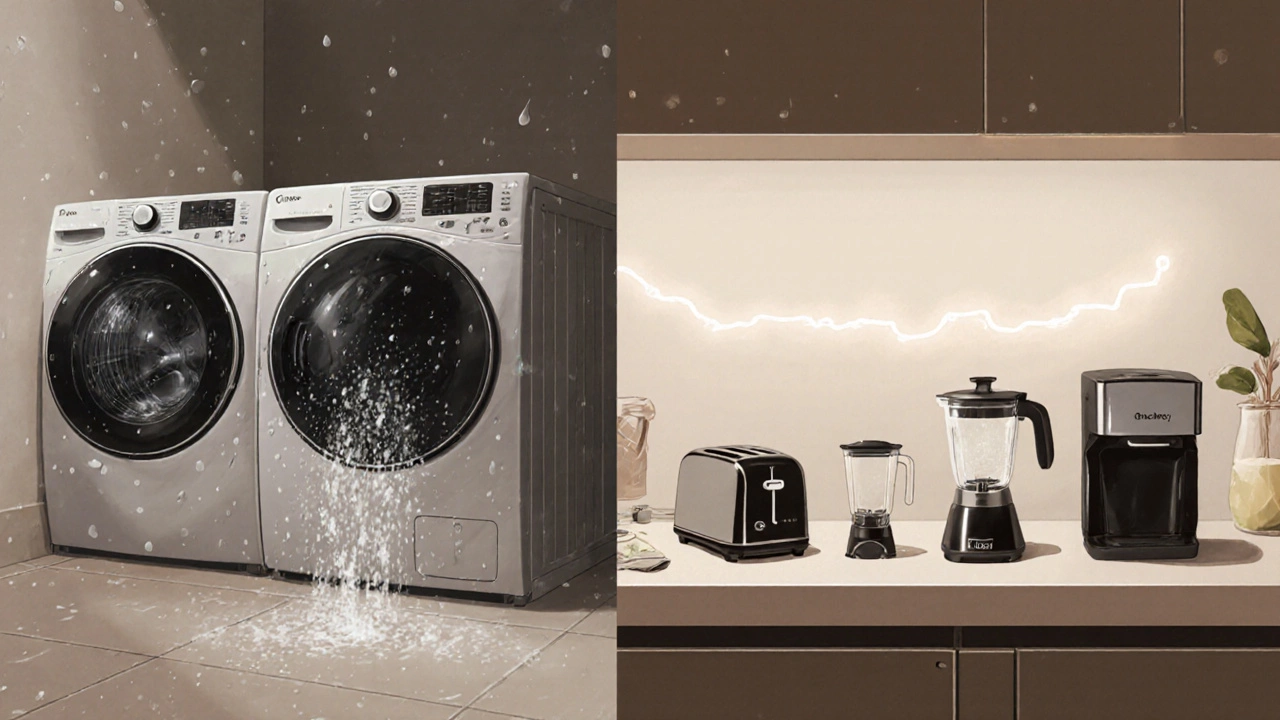
Why Knowing Appliance Types Matters
If you’re trying to fix something, you need to know what you’re dealing with. A fridge problem isn’t the same as a microwave issue. The parts, the risks, the repair costs-they’re all different.
For example:
- A fridge that won’t cool might have a faulty compressor or blocked condenser coils.
- A dishwasher that won’t drain could have a clogged filter or broken pump.
- A washing machine that shakes violently? Unbalanced load or worn suspension rods.
Knowing the type of appliance helps you diagnose faster. It also helps you decide whether to fix it or replace it. Most major appliances last 10-15 years. If yours is older than that and breaking down often, replacement might make more sense.
But don’t rush. Many repairs cost under $200 and can extend life by years. In Adelaide, where summers get hot and winters are mild, appliances work hard. A well-maintained fridge can last 18 years. A neglected one? Maybe 7.
What’s Not an Appliance?
Not everything that plugs in counts. A laptop? Not an appliance. It’s a computer. A TV? Entertainment device. A phone? Communication tool. A space heater? That’s tricky-it’s a heating device, but it’s not built into the home. It’s portable. Some call it a small appliance. Others don’t.
The line gets blurry. But here’s a simple rule: if it’s designed to perform a repetitive household task without needing you to interact with it constantly, it’s an appliance. If it’s for personal use, entertainment, or computing? It’s not.

Appliances in Modern Homes
Today’s appliances are smarter. Many connect to Wi-Fi. You can start your washing machine from your phone. Your fridge can tell you when you’re low on milk. But the core function hasn’t changed. They still cook, clean, cool, and heat.
Smart features help with efficiency and convenience. But they also add complexity. A smart oven with a broken touch screen? Still needs fixing. The heating element might be fine, but the software glitch stops it from working. That’s when you need a technician who understands both the hardware and the software.
Energy efficiency matters too. In Australia, energy bills keep rising. Appliances with high star ratings save money over time. Look for the Energy Rating Label-those stars aren’t just for show. A 5-star fridge uses up to 40% less power than a 2-star model.
When to Repair vs. Replace
Here’s a quick rule of thumb:
- If the repair cost is more than 50% of the price of a new unit, replace it.
- If the appliance is over 10 years old and needs major parts (compressor, motor, control board), replacement is usually smarter.
- If it’s under warranty or still efficient, repair it.
Also consider environmental impact. Throwing away a working appliance adds e-waste. Repairing it keeps it out of landfill. In South Australia, recycling programs for appliances are growing. Some councils even offer free pickup for old fridges and washing machines.
Don’t assume a broken appliance is dead. A technician might find a simple fix-a loose wire, a clogged filter, a worn belt. That’s often all it takes.
Final Thought: Appliances Are Invisible Helpers
You don’t think about them until they stop working. Then suddenly, you’re eating cold food, washing dishes by hand, or freezing in the shower. Appliances are quiet, reliable, and taken for granted. But they’re the reason modern homes run smoothly.
Knowing what counts as an appliance-and how they work-helps you care for them better. And when they break, you’ll know whether to call a repairer or head to the store.
Is a microwave considered an appliance?
Yes, a microwave is a small household appliance. It’s designed to heat or cook food quickly using electromagnetic radiation. Unlike a TV or laptop, it doesn’t provide entertainment or computing-it performs a specific kitchen task, which makes it a classic example of an appliance.
What’s the difference between a major and a small appliance?
Major appliances are large, permanent fixtures like refrigerators, washing machines, and ovens. They’re usually built into your home and require professional installation. Small appliances are portable and used for daily tasks-like toasters, kettles, and blenders. You can move them easily and plug them into any outlet.
Are all electrical devices appliances?
No. Only devices built to perform a specific household task count as appliances. A laptop, phone, or TV are electronics, not appliances. They’re for communication, entertainment, or computing-not cleaning, cooking, or cooling.
Can you repair an old appliance or should you always replace it?
You can often repair an old appliance, especially if it’s still energy-efficient and the issue is minor-like a broken door seal or faulty thermostat. But if the repair costs more than half the price of a new model, or if it’s over 10 years old and needs a major part like a compressor, replacement is usually more cost-effective and reliable.
Why do some appliances have energy ratings?
Energy ratings help you compare how much electricity an appliance uses. In Australia, the Energy Rating Label shows stars from 1 to 10. More stars mean lower running costs and less environmental impact. A 5-star fridge can save you hundreds over its lifetime compared to a 2-star model.

